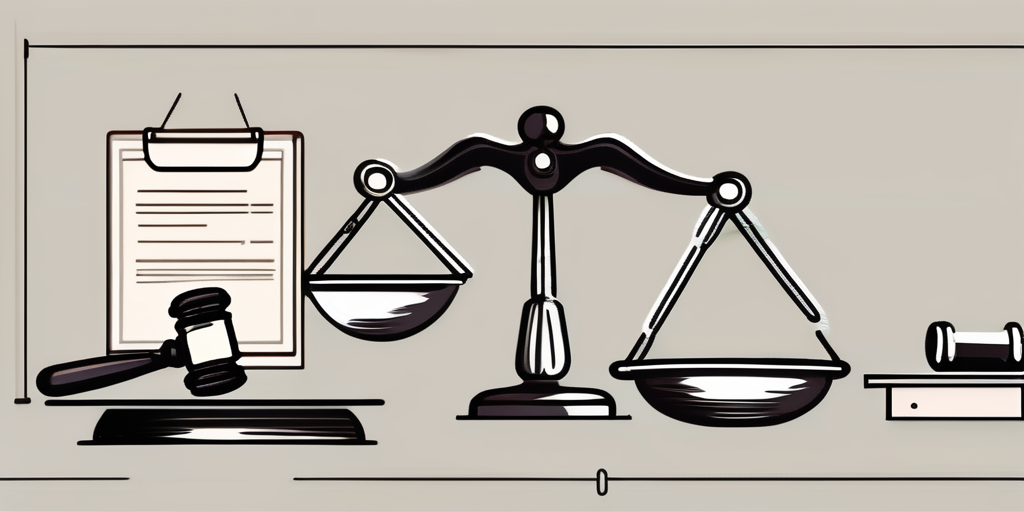Risk assessments play a crucial role in ensuring workplace safety and complying with health and safety regulations. In the United Kingdom, all employers are legally required to carry out risk assessments to identify potential hazards and implement appropriate control measures. This article will explore the concept of risk assessments, the legal perspective on their importance, the industries where they are mandatory, the process of conducting a risk assessment, and the benefits of implementing them in the workplace.
The legal perspective on risk assessments
Health and safety legislation in the UK places a legal duty on employers to conduct risk assessments. By fulfilling this legal requirement, employers demonstrate their commitment to providing a safe and healthy working environment.
The role of health and safety legislation
Various health and safety regulations in the UK require employers to conduct risk assessments. For example, the Health and Safety at Work Act 1974 places a general duty on employers to ensure the health, safety, and welfare of employees. By conducting risk assessments, employers can identify and manage workplace hazards, reducing the risk of accidents and ill-health.
Consequences of non-compliance with risk assessment laws
Failure to comply with risk assessment laws can result in serious consequences for employers. Legal implications may include fines, prosecutions, or even imprisonment in cases of gross negligence. Additionally, non-compliance can lead to reputational damage and loss of trust from employees and stakeholders.
Industries where risk assessments are mandatory
Risk assessments are mandatory in various industries to ensure workplace safety. Let’s explore two industries where risk assessments are particularly crucial: the construction industry and the healthcare sector.
Risk assessments in the construction industry
The construction industry is inherently hazardous, with numerous potential risks on construction sites. Risk assessments are essential for identifying and mitigating these risks, ensuring the safety of workers, subcontractors, and site visitors. Examples of hazards in the construction industry include working at heights, working with heavy machinery, and exposure to hazardous substances.
Working at heights is a common task in the construction industry, and it poses significant risks to workers. Risk assessments help identify potential fall hazards, such as unstable scaffolding or inadequate safety harnesses. By implementing appropriate safety measures, such as providing proper training and ensuring the use of safety equipment, the risk of falls can be significantly reduced.
Another risk that needs careful assessment in the construction industry is working with heavy machinery. Risk assessments help identify potential dangers, such as improper use of equipment or inadequate maintenance, which can lead to accidents and injuries. By implementing safety protocols, such as regular equipment inspections and operator training, the risk of accidents can be minimised.
The importance of risk assessments in healthcare
In the healthcare sector, risk assessments are vital for managing risks associated with patient care, infection control, and workplace safety. Healthcare organisations must assess the risks related to medical procedures, manual handling of patients, and exposure to infectious diseases. By identifying and addressing these risks, healthcare providers can protect both patients and staff.
When it comes to medical procedures, risk assessments help healthcare professionals identify potential hazards and implement appropriate safety measures. For example, during surgeries, risks such as infection, anaesthetic complications, or equipment failure need to be carefully evaluated. By implementing strict protocols, such as proper sterilisation techniques, thorough pre-operative assessments, and regular equipment maintenance, the risk of adverse events can be significantly reduced.
Manual handling of patients is another area where risk assessments are crucial in healthcare. Healthcare workers often need to lift, transfer, or reposition patients, which can lead to musculoskeletal injuries if not done correctly. Risk assessments help identify potential risks, such as inadequate training or lack of assistive devices, and allow for the implementation of proper techniques and equipment to minimise the risk of injuries.
The process of conducting a risk assessment
Conducting a risk assessment involves a structured approach to ensure comprehensive hazard identification and risk evaluation. The process typically includes the following steps:
Identifying potential hazards
The first step in a risk assessment is to identify potential hazards present in the workplace. This may involve reviewing workplace processes, equipment, and work practices, as well as considering any relevant accident or incident records. By thoroughly examining the workplace, employers can uncover hidden hazards and take appropriate action to mitigate them.
After evaluating and prioritising risks, the risk assessment process continues with the following steps:
Implementing control measures
Implementing control measures is an essential part of the risk assessment process. These measures are designed to eliminate or reduce the risks identified during the evaluation stage. Control measures can include engineering controls, administrative controls, and personal protective equipment. It is important to select the most appropriate control measures based on the nature of the hazards and the specific workplace conditions.
Monitoring and reviewing
Once control measures have been implemented, it is crucial to monitor their effectiveness and review the risk assessment regularly. This ensures that the control measures remain suitable and sufficient, and that any changes in the workplace are taken into account. Regular monitoring and reviewing also provide an opportunity to identify any new hazards that may have emerged and to update the risk assessment accordingly.
By following this structured approach to risk assessment, employers can effectively identify and manage workplace hazards, creating a safer and healthier working environment for all employees.
The benefits of conducting risk assessments
Conducting regular risk assessments offers numerous benefits, both for employees and employers. Let’s explore some of these benefits:
Enhancing workplace safety through risk assessments
By identifying and managing workplace hazards, risk assessments contribute to a safer working environment. This, in turn, reduces the risk of accidents and injuries, protecting employees and promoting their wellbeing. A safer workplace also fosters a positive and productive work culture.
Risk assessments and business reputation
Implementing risk assessments demonstrates an organisation’s commitment to health and safety. By prioritising the welfare of employees and stakeholders, businesses can enhance their reputation as responsible employers. This can attract top talent, improve employee morale, and increase customer confidence in the organisation’s products or services.



